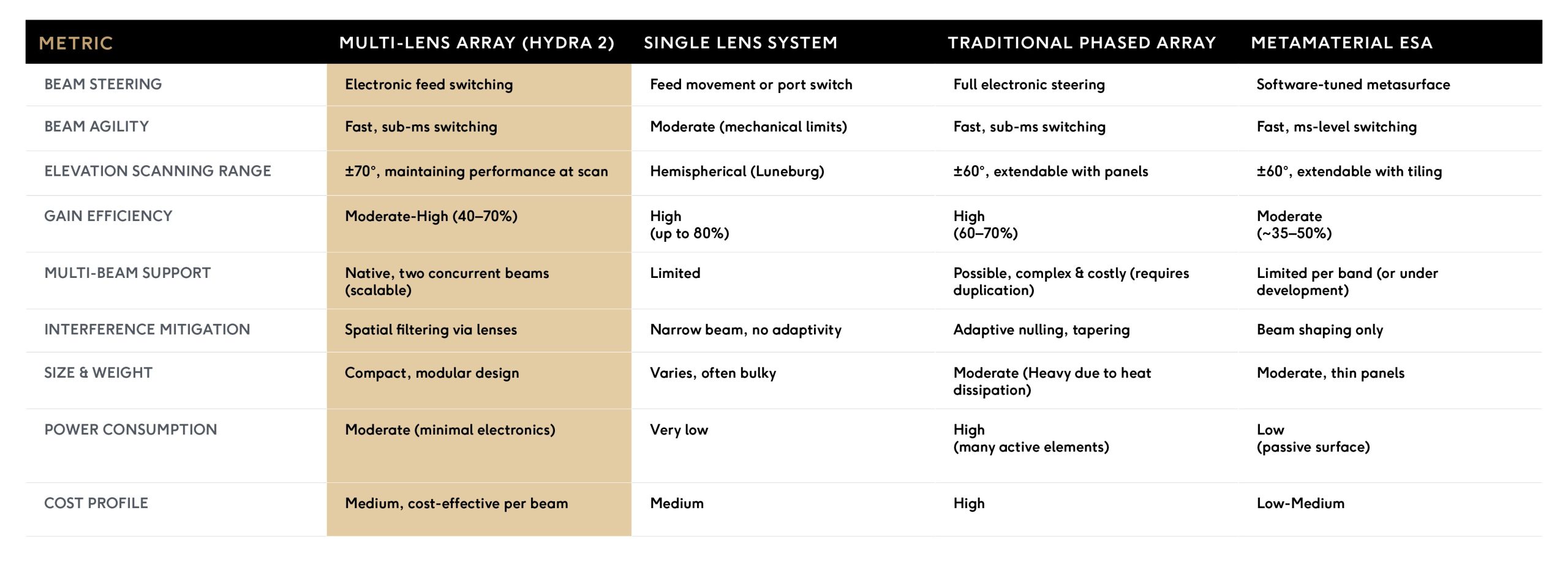Multi-Lens Array System
Multi-lens array antennas utilize dielectric lens elements to create highly directive beams. Each lens pairs with an independent feed that can be electronically switched to steer the beam without mechanical parts.
This design allows simultaneous connections to satellites in different orbits (GEO, MEO, LEO) with high beam efficiency and minimal active components. ALL.SPACE’s terminal technology is built on transformational optics and digital beamforming, employing multiple transmit and receive lenses on top of an array.

